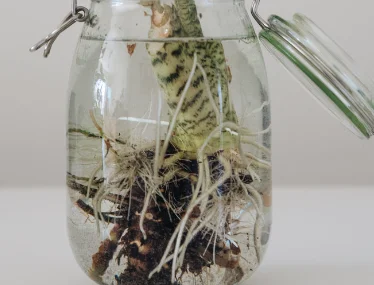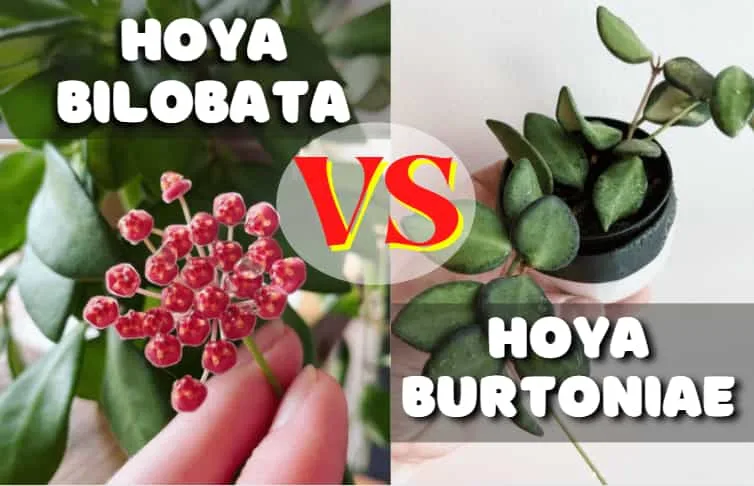Alocasia vs Anthurium [Differences & similarities to Identify perfectly]
Differences between alocasia and anthurium are alocasia has unbranched leaf vein where anthurium has branched. Alocasia has arrow shaped leaves with light green or white flower and light green inflorescence, where anthurium has heart shaped or cordate leaves with dark red flower and pinkish inflorescence.
As both of these plants are preferable to garden lovers, they are needed to be differentiated properly so that one can get his cherished one. That’s why we have brought this article as your easy guide. Scroll down to get the perfect one.
Alocasia vs Anthurium
| Basis of Difference | Anthurium | Alocasia |
| Plant type | Mostly epiphytic plant | Mostly terrestrial plant |
| Stem | Short normal stem | Shorter than anthurium called a rhizome |
| Leaf shape | Heart-shaped or cordate | Arrow-shaped |
| Leaf veins | Branched | Unbranched |
| Flower color | Dark red | Light green to white |
| Inflorescence | Pinkish | Light green |
| Root | Thick and densely arranged | Thinner than anthurium |
What is Alocasia?
Alocasia is an ornamental plant included in the Araceae family. This plant genus is native to South America and Asia. They are well-known to houseplant collectors for their beautiful and large foliage. You can find around 80 different species of Alocasia.
Alocasia grows vigorously in tropical areas. But you can maintain it easily in your house as they can tolerate hard times like drought, frost etc. Their large arrow-shaped leaves can enhance the beauty of your room corner.

What is Anthurium?
Anthurium also belongs to the family Araceae being an aroid. It is well-known as laceleaf, taliflower, flamingo flower etc.
It is called the largest family genus with more than 1000 species. It holds various hybrid cultivars too. It is native to central and South America.

Among their 1000 species, you can find different types of varieties that differ from each other in leaf color or leaf shape. But all over, it is easy to maintain and propagate.
Difference Between Alocasia And Anthurium
Let’s have a look at the differences between alocasia and anthurium. As they have many similarities, you can make differences between them by the following points-
Origin
Alocasia originated from South America and Asia whereas anthurium originated from Central and South America.
You can find anthurium in the tropical rainforests. Though alocasia also grows in tropical places, it cannot tolerate excessive frost.
Plant Type
Alocasia is a flowering perennial plant that is tuberous or rhizomatous.
Anthurium is a herb that grows as a perennial plant. Some of them are epiphytes while some others are terrestrial.
Plant Height
Alocasia plant grows between 2 to 6 inches long. Depending upon the species, their growth varies from this height range.
On the contrary, anthurium can grow up to 18 inches or 45 cm long. This also varies from species to species. The dense cultivars don’t grow more than 12 inches.
Root
If we want to look at the anthurium leaves, we will find fleshy and thick roots that are white and densely arranged. Some branched rootlets are also found which again become fleshy when they are matured.
Compared to that, the alocasia roots are thin and there are not too branched. Also, they are not clustered.


Stem
Anthurium stem is short from where long petiolate leaves are grown. It looks like a woody vine. Many people think of the petioles as stems but that should be noticed with concern. By finding nodes and internodes, you can be sure of the stem that remains near the ground level.
Alocasia leaves are mostly called tuber. Tubers are used as propagules or propagating materials. This also remains near the ground level but they differ from anthurium by their short central rhizome.
Leaf
There are several portions of the leaves that you can use as tricks to differentiate these two plants. Let’s go through them.
Leaf size
Alocasia leaves are broad and arrow-shaped. On the contrary, the anthurium leaves are also broad but they are smaller than alocasia leaves. Anthurium leaves remain clustered.


Leaf shapes
Smaller leaves while initiating remain almost heart-shaped or cordate shaped but the matured leaves take an arrow shape. But anthurium leaves remain heart-shaped all their lifetime.
Leaf growth
is more upright in the case of alocasia leaves than anthurium leaves.
Petiole
means the leaf portion which remains attached to the stem or that holds the leaf with the stem. Anthurium petioles grow as offshoots come out from the stem. Compared to anthurium, alocasia petioles grow straight from the centre of the plant.
Vein
The dark green foliage has clear creamy veins. On the other hand, you can find clear white-coloured veins in the anthurium.
The veins of anthurium leaves are curved and branched whereas alocasia veins are straight and they have no branches.
Inflorescence
Anthurium has a long inflorescence that is pinkish colored. Besides, the alocasia inflorescence is light green to white colored.


Flower
Flowers of anthurium are called perfect as they contain both male and female flowers. Small and red flowers grow in an anthurium plant whereas white to cream-colored flowers are grown in an alocasia plant.


Spathe
The anthurium spathe is thicker than the alocasia spathe.
Alocasia spathe covers the spadix. But fleshy anthurium spathe grows at a perpendicular shape to the spadix leaving the spadix exposed.
Similarities Between Alocasia and Anthurium
People become confused between alocasia and anthurium as there are many characteristics common to both plants. To become clear about the differences, let’s discuss their similarities first.
Leaf
Alocasia and anthurium both have broad leaves. The alocasia leaves take a sagittate or cordate shape when it is initiated that resembles anthurium.
At the same time, both of them are dark green colored though having differences in veins.
Inflorescence
The inflorescence of anthurium is called spadix which is spike-shaped, globe-shaped or club-shaped. This same type of spadix is also found in the anthurium which is spike-shaped.
Flower
Both of the plants initiate flowers in inflorescences having clustered arrangements. Though they differ in colors so much the flower arrangement is much more relatable.
Benefits of Alocasia And Anthurium
You will find some benefits of both of these plants. Let’s discuss these benefits in a nutshell.
Benefits of Alocasia
- Used as an ornamental plant to decorate room corners or home gardens. As this plant can grow much, it cannot be suited as a table plant. But it can be well-adjusted with the room corner. It meets up the aesthetic needs by covering the ground.
- The corms of alocasia are used as food. The corm is mainly the part of the rhizome or stem. It is processed properly to use as food.
- Alocasia removes skin problems.
- Leaves are important to get rid of the mosquito problem.
- Some ayurvedic or herbal medicines are also made of alocasia.
Benefits of Anthurium
- Anthurium is used for ornamental purposes and kept in a corner of the room in a pot.
- It is an air purifying plant as its large leaves can eradicate ammonia, toluene, formaldehyde etc.
- Anthurium helps to increase concentration in work creating a soothing environment.
- These are thought of as lucky plants according to Feng Shui.
- It reduces joint pain and gives relief from rheumatism and arthritis.
Which one is better between Alocasia and Anthurium?
As you have got so many points about alocasia and anthurium, you may have a question in mind comparing which one is better.
Well, this type of question is always difficult to answer because this answer varies from person to person according to their choice. But you can make your decision depending on some specific points.
If you want to consider flowers, anthurium has shinier bloom than alocasia. Their red color enchants everyone’s mind.
Again, the heart-shaped branched and green leaves of anthurium are preferable to alocasia to the gardeners.
But in the case of propagation purpose, alocasia is easier to propagate than anthurium. The rhizome of alocasia can easily grow a new plant than the stem of anthurium.
Alocasia is easier to find than anthurium as they are more available in tropical forests. Now, this is totally up to you which plant is going to decorate your house.
Easy caring guide for Alocasia and Anthurium
Here are some easy caring guides for you. Follow it for the tremendous growth of your alocasia or anthurium plant.
- Soil- They can grow better in the mixture of 50% perlite and 50% garden soil. The garden soil should be sandy loam so that aeration and water flow can be easy.
- Watering- Watering should be done when 1 inch of the soil is dry. These plants cannot tolerate waterlogged conditions as excessive water tends to root rot. So water only when the soil is dry.
- Sunlight- Bright but indirect light should be made available for these plants. Scorching sunlight burns the flower color. Again, low sunlight destroys the foliage color. That’s why sunlight should be optimum.
- Temperature- Temperature should be between 65 to 82 degrees Fahrenheit for better development.
- Humidity- Humidity should be around 60% to avoid pest problems.
- Fertilizer- Fertilizers should be applied once a month if needed.
FAQs
1. Is anthurium a lucky plant?
Anthurium is thought to be a lucky plant as it can bring prosperity and success by increasing concentration on the work.
2. Does alocasia bloom?
Yes. Alocasia bloom with light green, creamy or white flowers that remains clustered in a spadix.
3. Is anthurium and alocasia the same?
No. They are completely two different plants having dissimilarities in leaf, flower, root and shoots.
Final Thoughts
Finally, we are at the closing point of our discussion. Anthurium and alocasia plants are always confusing for their large leaves. But if you have a close view of the leaves and overall plant, you can certainly differentiate them.
Just follow our proper guide to look at their leaves, flower, inflorescence type, root and petiole. You can identify them if it is alocasia or anthurium.
After that, choose your perfect plant and get them as soon as possible to make your beautiful room more adorable. Thus, make your garden collection fulfill.






